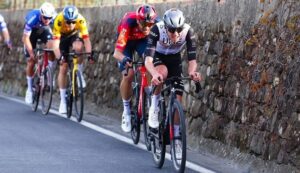The Cipressa climb plays a crucial role in Tadej Pogačar’s strategy at Milan-San Remo, the longest and one of the most unpredictable one-day races. As a rider known for his explosive climbing and aggressive tactics, Pogačar sees the Cipressa as his best chance to shake off the sprinters and reduce the competition before the final Poggio ascent.
At 5.6 km with an average gradient of 4.1%, the Cipressa may not seem overly selective, but its importance lies in the fatigue it generates. By this point, the peloton has covered nearly 270 km, meaning even a relatively moderate climb can create significant damage. If Pogačar and UAE Team Emirates set a brutal pace here, they can soften the legs of the fast men like Jasper Philipsen or Mathieu van der Poel, making them more vulnerable later.
Pogačar’s best chance to win Milan-San Remo is to attack early and break the race open before a sprint finish. His attempt in 2022 saw him go on the offensive on the Poggio, but the group remained too large. A more aggressive selection on the Cipressa could leave fewer rivals capable of chasing him down later.
Additionally, the Cipressa descent and the flat section before the Poggio offer an opportunity to maintain momentum. If Pogačar can force a small elite group or even break away solo, he’ll increase his chances of avoiding a sprint showdown.
For Pogačar, the Cipressa isn’t just a climb—it’s a launchpad. If he can make it hard enough, his chances of winning La Primavera increase significantly.